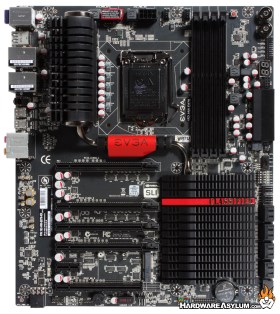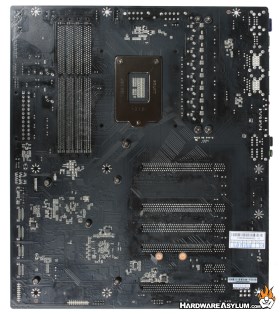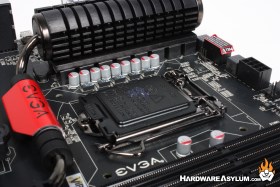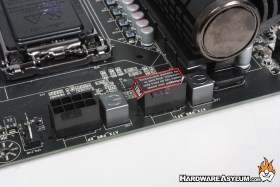EVGA Z87 Classified Motherboard Review
Author: Dennis GarciaBoard Layout and Features
Some of the most popular EVGA motherboards in the past have followed a classic color scheme featuring a jet black PCB and red expansion slots. As we saw with the EVGA X79 Dark the Z87 Classified is breaking with tradition and has rescinded the red color to be a muted accent leaving black to speak volumes.
The PCB is considerably thicker than what was found on previous EVGA motherboards which gives the board a solid feel that doesn’t flex much under pressure.
Flipping the motherboard can tell us a lot about how it is constructed including where some of the major chips are located. Every PCI Express slot is fully wired meaning that the full slot width is soldered to the PCB. As we will see later in this review that doesn't always mean each slot comes with full set of PCI Express lanes. Looking towards the lower section of the motherboard you can see the chipset location along with the PLX used to split the PCI Express lanes.
EVGA has chosen a traditional VRM design that places all of the power phases opposite of the memory slots. The design is quite small when compared to some of the other high-end LGA 1150 motherboards with a total of eight power phases for the CPU, Ring and internal graphics. This might be one of the smallest PWMs we have seen on any high-end motherboard but that isn't always a bad thing. Most of the time a large VRM is designed to reduce heat and increase power stability but, the majority of these circuits are never activiated making them nothing more than something good to look at.
The area around the CPU socket is very well organized with very few components making it good for those who use alternative cooling methods like Water, Phase and LN2.
Clean power starts at the source, and with the power demands of extreme overclocking, the more power you have available, the better off you will be. EVGA understands this and has offered an additional 8-pin 12v power connector to help with the extreme overclocking efforts.





